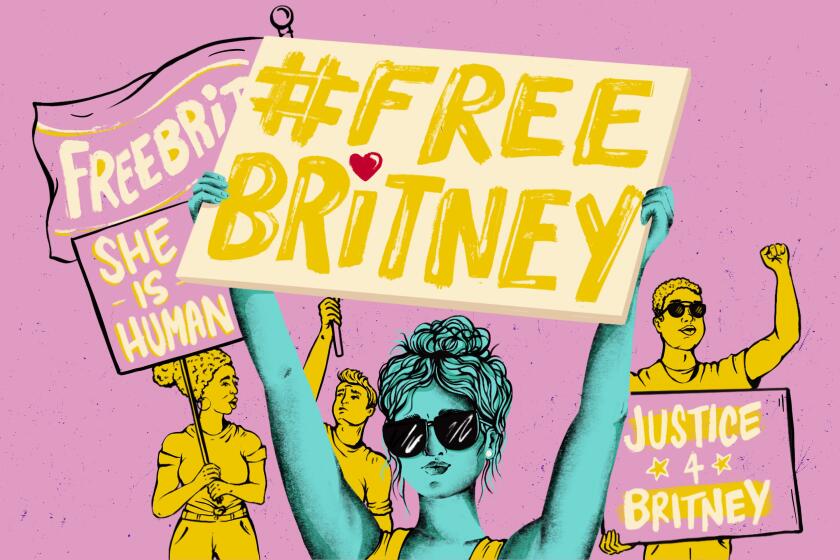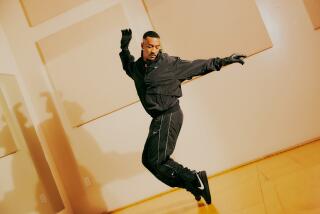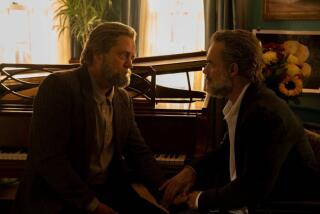The ‘November Rain’ music video defined a generation. Inside its ‘bonkers’ production
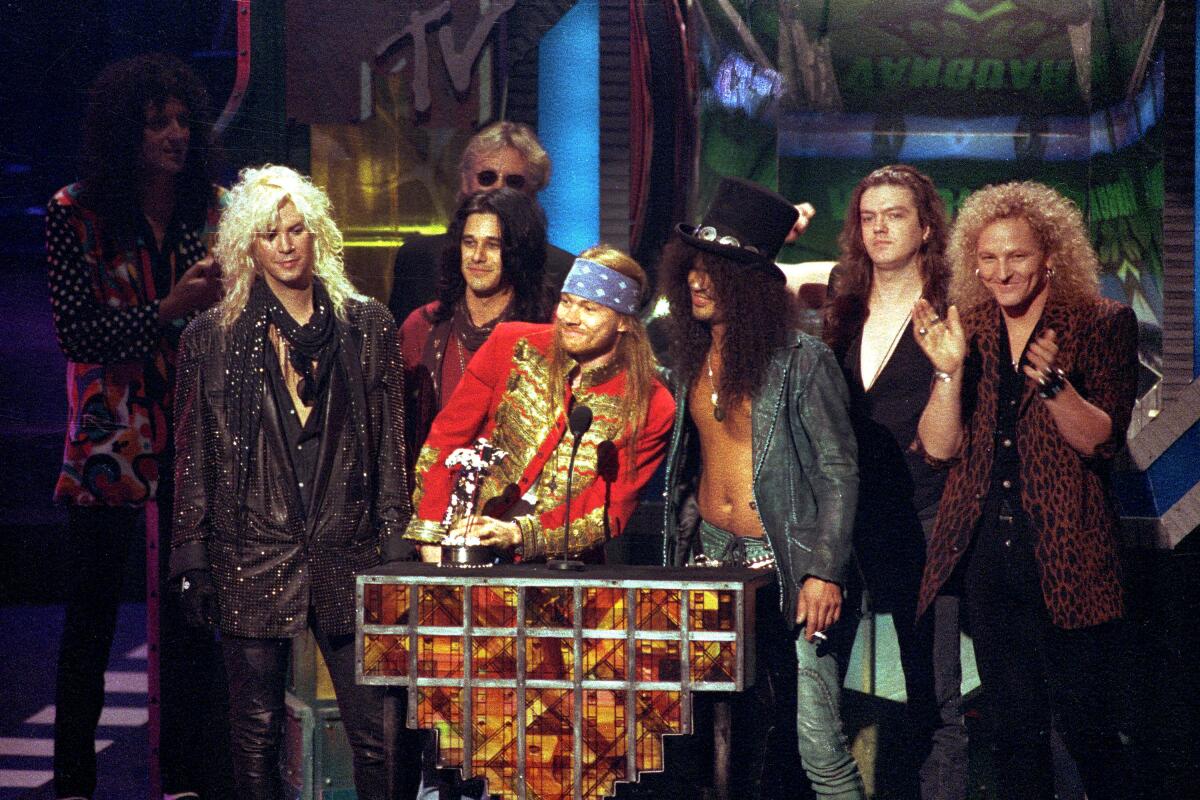
Maybe you remember the mullet wedding dress. Maybe for you it’s the mirrored coffin covering half of Stephanie Seymour’s face, or the long-haired guy hurling himself face-first into a wedding cake, or Slash’s guitar solo in front of a remote church.
(OK, we all remember that.)
Thirty years ago this week, the “November Rain” video premiered on MTV — a baroque nine-minute rock opera starring Guns N’ Roses frontman Axl Rose and his then-girlfriend, supermodel Seymour, in a timeless tale of love gone wrong. The video, unveiled on MTV’s “Headbangers Ball” and broadcast later that night on Fox, left a generation of music fans with questions that linger to this day. “How did Stephanie die?” “Why did that guy dive into the cake?” “Did he kill Stephanie?” “What is Slash doing in the desert?” and “Oh, my God. Is this the best music video of all time?”
Directed by Andy Morahan, “November Rain” quickly went into heavy rotation on MTV and helped the single — a lushly arranged power ballad that shifts into an ominous metal dirge at the seven-minute mark — climb to No. 3 on the charts, where it landed behind two other memorably romantic anthems (Boyz II Men’s “End of the Road” and TLC’s “Baby-Baby-Baby”).
The second in a loosely connected trilogy of videos helmed by Morahan — the others being “Don’t Cry” (the one where Slash drives a car off a cliff) and “Estranged” (the one where Axl jumps off an oil tanker and swims with dolphins) — “November Rain” was based on the story “Without You,” written by Del James, a journalist, road manager and permanent fixture in the band’s orbit.
Before reuniting with her “Real World” cast mates, Julie Gentry had to grapple with the very public life of a ‘naive’ 19-year-old from Birmingham, Ala.,: herself.
“November Rain” cost a reported $1.5 million, making it the most expensive music video of its time — a milestone that was quickly surpassed but that drew much negative media attention because of Rose’s increasingly volatile reputation. Fans may have embraced the video, but it was regarded by many cultural tastemakers as excessive, indulgent, bloated — particularly in contrast to Nirvana’s gritty, low-budget “Smells Like Teen Spirit,” released a few months earlier.
To that band’s drummer, Dave Grohl, “November Rain” was a “train wreck,” as he recalled in “I Want My MTV: The Uncensored Story of the Music Video Revolution,” by Craig Marks (now The Times’ pop music editor) and Rob Tannenbaum. “When a musician starts to use the term ‘mini-movie’ to describe a video, it’s time to quit.”
At the Video Music Awards that September, where Rose and Kurt Cobain famously clashed offstage, Guns N’ Roses was honored with the Michael Jackson Video Vanguard Award, the MTV equivalent of a lifetime achievement award. But the video itself picked up only one competitive trophy, for cinematography. One vibe shift had taken place — decadent hard rock was out and grunge was ascendant — and another was lurking in the wings — a few months before “November Rain” came out, “The Real World” premiered on MTV. Over the ensuing decade, the network would steadily cut back on music videos and switch almost completely to unscripted programming.
“‘November Rain’ was a bit like the last of the dinosaurs before the meteorite, and the meteorite was grunge and everything that happened to the music industry” thanks to file-sharing, says Mike Southon, one of two cinematographers who shot the video.
But 30 years later, “November Rain” reigns supreme. In 2018, it became the first video made before YouTube to reach the billion-view milestone. As of June 2022, it has been viewed nearly 1.9 billion times, more than any video of the ‘80s or ‘90s. According to MTV’s own rankings, it’s the third-best video of all time.
As music videos have become both more accessible — just a few taps away on a smartphone — and less influential, “November Rain” stands as an enduring testament to the vast cultural sway the medium once held.
It has inspired numerous parodies, themed weddings, a deep-dive podcast and at least one scented candle. Its fans include filmmaker Sofia Coppola, who tried to acquire the original storyboards from Morahan because the clip is “so epic and glamorous,” as she recently told Vice, and former President Trump, who reportedly made White House staffers watch the video because he believed it was the greatest of all time.
“November Rain” has become to music videos what “Titanic” is to movies — a tad over the top, maybe even a little corny, but undeniably effective, an audaciously romantic blockbuster that continues to resonate and generate feverish speculation decades after it was made.
Nothing lasts forever, except, perhaps “November Rain.”
‘Music videos need to be a bit obtuse’

By the time Guns N’ Roses came calling, Morahan was already a top director known for projects with George Michael and Elton John.
The enigmatic video for Michael’s “Father Figure,” which depicted an affair between a fashion model and a cab driver, played by Michael, had caught Rose’s attention. The singer was looking for a filmmaker with a cinematic sensibility to build a short film trilogy around the ambitious songs he’d written for the group’s albums “Use Your Illusion I & II.”
James’ story, written well before “November Rain” was released, centered on a hard-living rock star named Mayne Mann (and clearly modeled on Rose) who comes unglued after his ex-girlfriend’s suicide. (“I basically was that person,” Rose wrote in an introduction to James’ short story collection, “The Language of Fear.”) The story ends with Mayne playing “Without You,” the hit song inspired by their breakup, on the piano as flames engulf his condo.
In the analog era of 1992, none of this backstory was available to the casual MTV viewer. (As an obsessive tween fan of Guns N’ Roses, I had no way of knowing James was not yet a published author and tried to find the story at my local library.) And its actual resemblance to “November Rain” is limited.
For those who have somehow forgotten the key points in the video, here’s a brief refresher: It opens in a dimly lighted bedroom, where Rose pops some pills. Cut to a packed theater, where the band performs onstage, backed by a full orchestra, as the narrative unfolds. In a picturesque church, Seymour, wearing a garter-revealing gown, marries Rose. They share a PG-13 open-mouthed kiss, then pile into a vintage white convertible as they are showered with white petals. But a weary look on Seymour’s face suggests all is not well in the relationship.
You knew where you were. You were in the retirement home, baby.
Slash walks out of the ceremony, somehow exiting from another church entirely, and performs a guitar solo on a desolate frontier plain. A joyous wedding reception is interrupted by a sudden rain shower that sends guests fleeing for cover with a curious urgency. A man dives into the wedding cake. Wine is spilled. The music shifts. Seymour is dead, a coffin covering half her face. Rose weeps over her grave as rain pours from the sky. In a flashback, Seymour tosses her bouquet, which lands on the casket and bleeds from red to white.
As a film school student, Morahan was deeply moved by Nicolas Roeg’s experimental thriller “Don’t Look Now,” starring Julie Christie and Donald Sutherland, which used flashbacks and premonitions to tell the story of a grieving married couple. This, coupled with images inspired by Rose’s regression therapy, inspired Morahan to play with a nonlinear narrative.
For one, the video never shows how Seymour dies, or why her face is covered in the coffin, though she and Rose fight over a gun in the “Don’t Cry” video. “That was a part of the story that people had to figure out,” Morahan says. “‘Did she have half her face blown off?’ Who knows. But it made for a fantastic kind of talking point.”
“November Rain’s” elliptical quality is part of what makes it so successful, argues Daniel Pearl, one of the two cinematographers who worked on the project. Unlike films and TV shows, music videos “are meant to be seen more than once,” he says. “Music videos need to be a bit obtuse, have a bit of complexity to them, so that as you watch it a third, fourth, fifth, sixth time, you’re getting something new.”
‘Where’s the cake?’
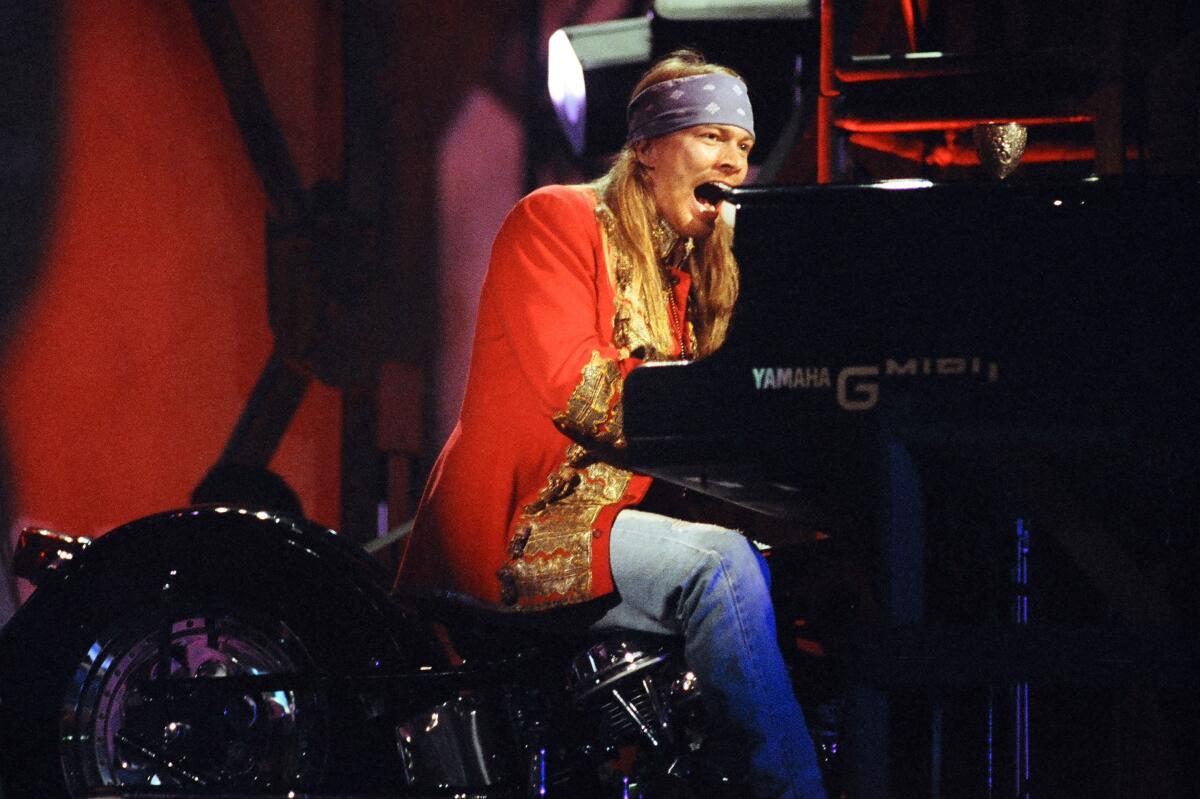
The band was “pulling apart at the seams” by the time of “November Rain,” Morahan says.
“They would only really want to work at night. So even if you had a call sheet that said ‘daytime,’ there’s a good chance they wouldn’t turn up till after sunset.”
Through trial and error, the director learned the best way to film in daylight was to keep band members going all night and embrace a certain lack of continuity — like, for instance, the fact that Rose stands graveside at night even though the funeral takes place during the day.
Southon, who shot the live performance footage in the video, recalls sitting around all day in a theater rigged with eight cameras and packed with hundreds of extras, waiting for the band to arrive. “It was probably about 3 in the morning that the [assistant director] came over to us and said, ‘OK, that’s a wrap,’ and we hadn’t shot anything,” he recalls. They had to do the whole thing a few days later at a new location, but the moment the cameras finally started whirring, it just worked. “The exhilaration you feel can never be replaced,” says Southon, who also shot Michael’s celebrated video for “Freedom ’90.”
The band’s unpredictable energy — and Morahan’s ability to channel it fruitfully — led to some of the most indelible moments in the video.
Take, for instance, Slash’s guitar solo. While shooting the wedding ceremony at St. Brendan Church on Van Ness Avenue, the guitarist stepped outside for a smoke break as the cameras continued to roll. Watching on a monitor, Morahan realized the footage of Slash strutting down the aisle and out the church door would provide a perfect transition to his big solo. “That gave us the idea of him walking out the door into the middle of nowhere,” Morahan says.
What started as a blogger’s tagline has become a global rallying cry for justice and freedom. The story of #FreeBritney, as told by the movement’s leaders.
The solo was filmed on a movie ranch in New Mexico, in front of a wheeled church that also appeared in the 1985 western “Silverado.” (The ranch was later bought by designer Tom Ford, and is currently on the market. The church is still there, but it has been repainted.) To get the shot, Pearl, the cinematographer, used a Louma crane, a Steadicam and a helicopter, which he says “came ridiculously close [to Slash] at one point. And at that point, we stopped.”
On location in New Mexico, Morahan happened to run into fellow director Anton Corbijn, who saw the gear and asked, “‘Oh, my God. Is this the whole video? It’s incredible,’” Morahan recalls. “I go, ‘No, it’s about 30 seconds.’ It was bonkers.”
Likewise, Morahan’s original treatment never included a man diving headlong into the wedding cake but, he says, “Axl and I wanted this ‘Godfather’-type of ostentatious wedding that gets absolutely splattered. It’s not supposed to be realistic.It’s supposed to be completely [over the top].” They had just about wrapped the scene — shot at Villa del Sol d’Oro, a 1920s-era Tuscan-style villa in Sierra Madre — when Rose threw out an idea: Why not have someone dive into the cake?
“Without a proper stunt coordinator, we should probably never have ever done it,” Morahan says. “But it literally was our last shot [and we thought], ‘What harm can it do?’” Pearl thought it looked ridiculous but a do-over was impossible because there wasn’t a backup cake. Morahan agreed that it didn’t quite work and left the shot out of his original edit of the video, prompting Rose to ask, “‘Where’s the cake?’” Back in it went.
“Everybody loves it. And people talk about it all the time,” says Pearl, whose credits include “The Texas Chainsaw Massacre” and “Billie Jean.” “But to me, it still looks wrong.” Morahan is less bothered by it: “It’s part of rock ’n’ roll folklore now.”

Over time, the production itself has acquired an air of mystery almost as intense as the story it told. No one seems to remember which cemetery they used as a location or can find any call sheets from the shoot. The wedding dress, which has inspired countless knockoffs, has been attributed to a designer named Carmela Sutera, but its whereabouts are unknown. (And no one seems to remember who designed the costumes for the video, either.)
Like any other great work of pop culture, “November Rain” has even spawned its own urban legend: For years, it was widely believed that Riki Rachtman, who hosted MTV’s “Headbangers Ball” and appears in the wedding reception sequence, was the cake-jumper, but he recently admitted he wasn’t.
Robin Petering and Tara Reader, Angelenos who host the podcast “Nothing Lasts Forever,” which is dedicated entirely to what they call the “NRU” — the “November Rain universe” — may have solved this pop culture mystery. They believe the cake-jumper is a musician named Steve (his last name is disputed) who frequented the Rainbow Bar & Grill in the ‘90s and made money as a “rocker” extra in music videos.
Petering and Reader began the podcast during the deep days of the COVID-19 pandemic, hoping to determine whether “November Rain” is, as Trump insisted, the greatest music video of all time. Nearly two years and dozens of episodes later, they know more about it than perhaps anyone outside of Guns N’ Roses.
They still aren’t sure if it’s the greatest music video ever, but “it is part of the collective psyche of a generation,” says Reader. “Anybody who was born between 1965 and 1985 has some distinct memory of it. It was a time, pre-social media, when something could really get and hold your attention.”
And it continues to captivate viewers today. Morahan has gotten calls from people interested in turning images from the video into NFTs, but he says, “I’d rather that we had a moment that was culturally important than just being wallpaper.” And in that regard, the director is thrilled that fans continue to search for answers — about “Steve” and much more. “I still enjoy people not quite figuring it out,” he says. ”Long may it continue.”
More to Read
The complete guide to home viewing
Get Screen Gab for everything about the TV shows and streaming movies everyone’s talking about.
You may occasionally receive promotional content from the Los Angeles Times.

